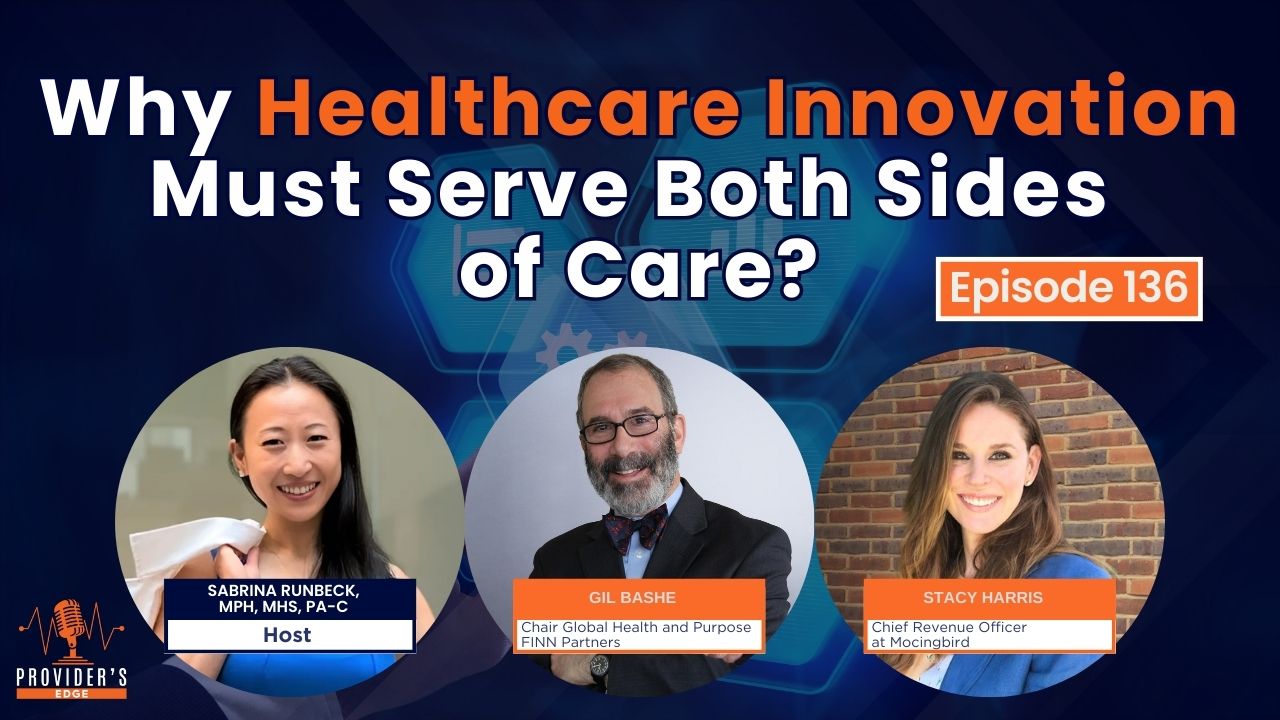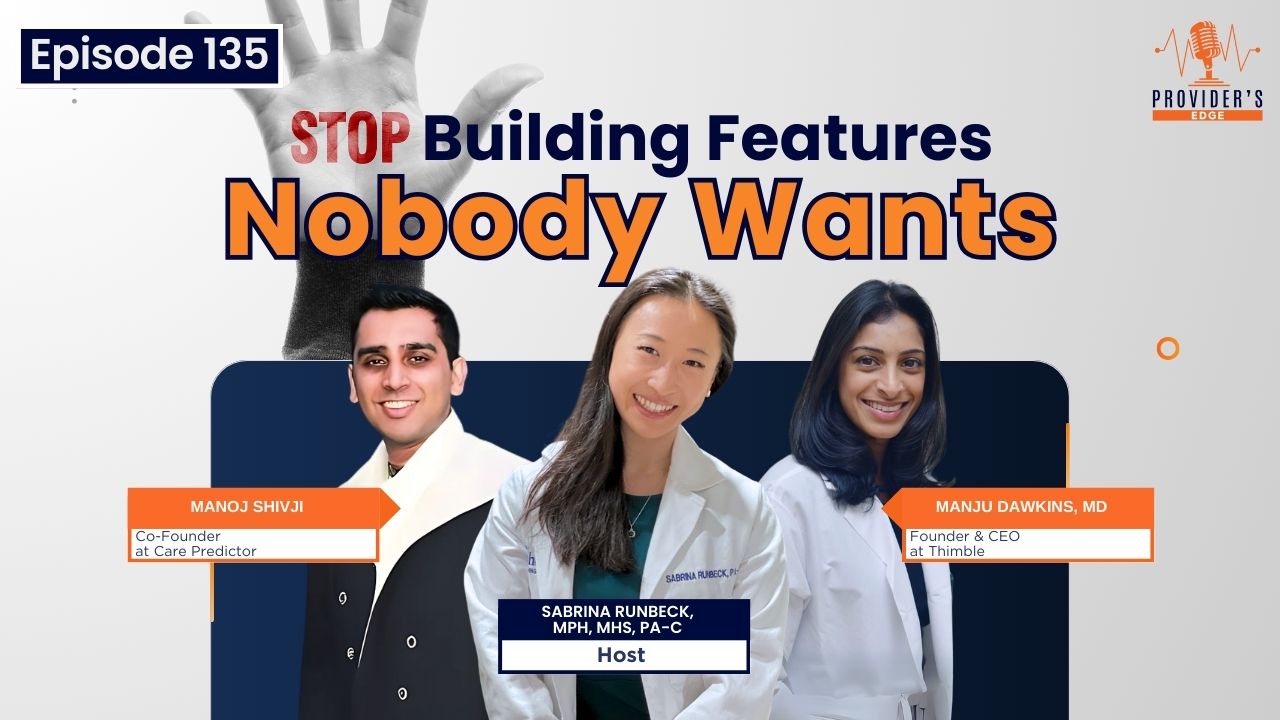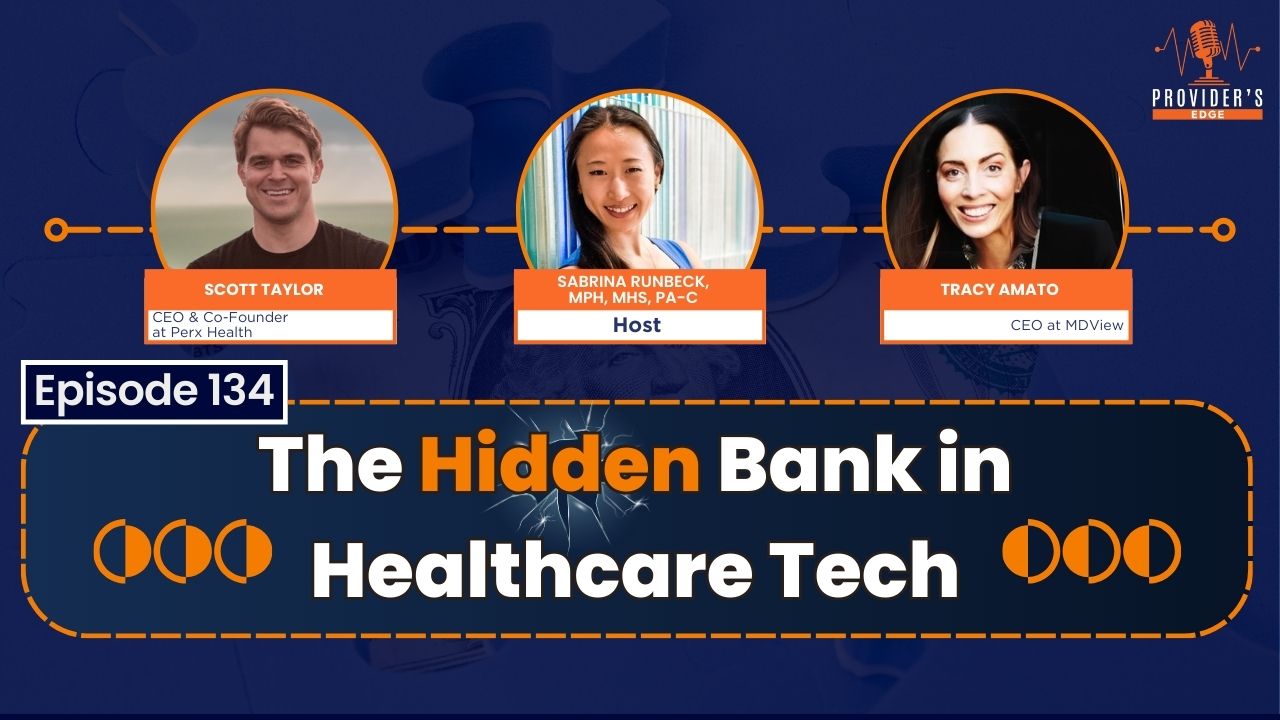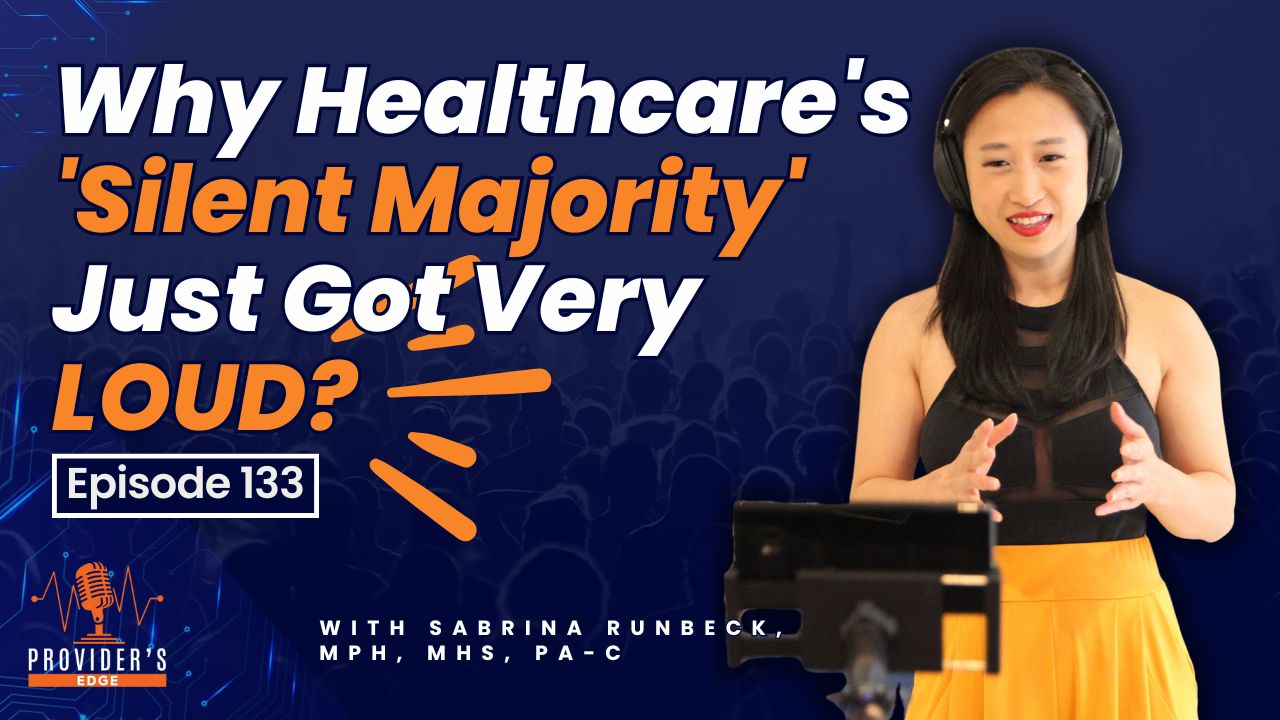
Why Healthcare Innovation
Must Serve Both Sides of Care?
Listen up if you want to scale your HealthTech company without burning through millions in marketing. I just discovered why even the most innovative solutions are failing to gain traction, and it's not what you think. Two conversations at VIVE conference exposed a critical blind spot that's causing most companies to miss out on a $347B opportunity.Here's what caught my attention: while interviewing dozens of healthcare technology leaders, I noticed a consistent pattern of failure that had nothing to do with technology. Let me share what I learned through two eye-opening conversations that reveal exactly why some companies scale effortlessly while others hit a wall.
Table of Contents
Listen anywhere you get your podcastin' on.
Live Interview

The Reality Check: Two Failed Growth Stories
The Mental Health App That Missed Its Market
I spoke with a HealthTech founder who had developed an impressive mental health app generating 8-figure revenue. They were excited about breaking into the pharmaceutical market, leveraging their large user database for clinical trials.
The problem? Despite having significant funding and a solid product, they were focusing on the wrong growth channel entirely. Their data, while extensive, wasn't capturing the critical role of caregivers in patient outcomes. This oversight was about to cost them millions in misdirected marketing efforts.
The Early Detection Tool That Couldn't Scale
Another executive had created an early dementia detection tool that already secured insurance reimbursement. On paper, it looked perfect: no out-of-pocket costs for patients, and clinicians could bill for it. Yet adoption was stalling.
Why? They hadn't considered how caregivers would actually use the tool in their daily routines. The solution required logging into a separate system outside their existing workflow - a seemingly small detail that became a massive barrier to adoption.
"At the bottom line, what we're talking about is people. You can't forget that this is about humanity." - Gil Bashe
Understanding the Caregiver Integration Gap
The data tells a compelling story about why caregiver integration matters:
- For every patient using your solution, there are typically 2-3 caregivers actively involved
- Companies integrating caregiver support see 2-3x faster growth
- Customer lifetime value increases by 175% with caregiver-inclusive solutions
- Referral rates jump by 143% when caregivers are actively supported
The Four Pillars of Successful Integration
1. Ecosystem Effect
Most companies think patient-centric means focusing solely on the patient. Here's what successful companies do differently:
- Map the entire care ecosystem around their product
- Build features that support both patients and caregivers
- Create communication channels between all stakeholders
- Design for the entire care team, not just the end user
2. Decision-Making Framework
Understanding the real decision-makers in healthcare purchasing:
- Sales cycles shorten by 40% when caregiver needs are addressed
- Adoption rates increase by 65% through caregiver advocacy
- Implementation success rates improve by 83%
- User engagement rises by 127%
3. Strategic Integration
Successful companies focus on three key areas:
- Streamlining communication between all stakeholders
- Simplifying resource access for daily care management
- Automating routine tasks that consume caregiver time
4. Implementation Success
The most effective approach follows a clear 90-day framework:
Month 1:
- Conduct extensive caregiver interviews
- Map current workflows and pain points
- Identify quick wins for immediate impact
Month 2:
- Implement immediate improvements
- Gather real-time feedback
- Adjust based on caregiver input
Month 3:
- Refine approach based on learnings
- Prepare for broader rollout
- Develop long-term support structure
"When we truly put the patient and caregiver on the same table, as innovation comes about...at the end of the day, everything is about improving the patients." - Sabrina Runbeck
Measuring Impact and ROI
Companies following this approach see remarkable results:
- 127% increase in user engagement
- 89% improvement in customer satisfaction
- 143% boost in referral rates
- 2.4x increase in annual recurring revenue
- 67% reduction in customer churn
- 3.1x improvement in lifetime customer value
⚙️Resources: What level of impact have you created so you know where you need to uplevel? Find out your Impact Quotient score now? https://PulsePointPath.com/Quiz
Taking Action: Next Steps for HealthTech Leaders
Audit Your Current Solution
- Review your product through the caregiver lens
- Identify gaps in caregiver support
- Map the complete care ecosystem
Build Your Integration Strategy
- Define clear integration milestones
- Create a caregiver feedback loop
- Develop support resources
Measure and Adjust
- Set clear KPIs for caregiver engagement
- Track adoption and usage metrics
- Gather regular feedback
Frequently Asked Questions
Q: How do I identify the key caregivers in my product's ecosystem? A: Start by mapping out everyone who interacts with your solution, from healthcare providers to family members. Look for patterns in who makes decisions and influences adoption.
Q: What's the first step in implementing caregiver integration? A: Begin with a thorough audit of your current solution, identifying all touchpoints where caregivers might interact with your product.
Q: How can I measure the ROI of caregiver integration? A: Track metrics like user engagement, adoption rates, customer satisfaction, and referral rates before and after implementing caregiver support features.
Q: What if my product is primarily focused on healthcare providers? A: Even provider-focused solutions can benefit from considering caregiver needs, as they often influence provider decisions and workflow adoption.
The future of healthcare technology isn't just about building better patient solutions – it's about creating comprehensive ecosystem support that includes caregivers as key stakeholders. By expanding your vision beyond patient-centricity to include caregiver integration, you're not just growing your market – you're building a more sustainable, impactful business.
About the author:
Sabrina Runbeck, MPH, MHS, PA-C, empowers healthcare innovators to streamline their businesses so they can scale effortlessly---even while taking a 4-week vacation. A former Cardiothoracic Surgery Physician Associate, she co-founded PulsePoint Path, working with an advisory board to help founders amplify their social impact and profits. A bestselling author and sought-after speaker, Sabrina hosts the "Provider's Edge" and "HealthTech Growth" podcasts, while leading Healthcare Amplified, a network focused on boosting visibility and relationships for innovative healthcare leaders.
Let's hear your thoughts in the comments below ? How are you integrating caregiver support into your HealthTech solution? What challenges are you facing in this process?
#HealthTechInnovation #HealthcareTechnology #CaregiverSupport
Recommended Podcast Episodes
Here's a HealthTech secret that investors won't tell you: 82% of healthcare tech startups fail not because of poor technology,
Have you noticed how the most significant changes often come after a series of seemingly unrelated events converge?
Be a guest on our show
The Provider's Edge show is always looking to feature healthcare change-makers and celebrate the work they are doing to improve healthcare.
Together, we can encourage other healthcare entrepreneurs and startup founders to up-level their businesses.If you or someone you know could be a good fit as a guest on the show, please click on the bottom below to apply as a speaker.
Healthcare Entrepreneurs!
I can help you gain visibility and credibility in the right circles so you can accelerate your mission and profitability!After overcoming burnout working in surgery, I went back to my roots in neuroscience and public health. I learned the importance of building key human relationships with my team throughout our organization.While helping healthcare executives and entrepreneurs to get out of the day-to-day operation of their practice, I realized I needed more visibility and more connections to reach my ideal clients.Once I set out to be highly visible in the right circles, I was able to leverage my network of strategic partners to convert clients 5x higher than any other marketing channel I had tried previously.Now I help healthcare change-makers to accelerate their impact and increase profitability by gaining visibility and credibility with the right strategic partners.My clients no longer worry about where their next client is coming from, the need to plan additional budget for ads spending, or losing the ability to connect with others because their social media account is shut down.If you want to share your social mission with the world and gain pivotal supporters that become loyal clients... then you are in the right place, with the right consultant who is also a recovered clinician.




